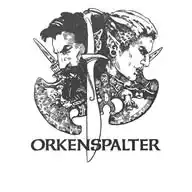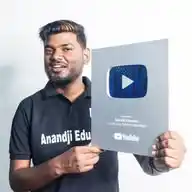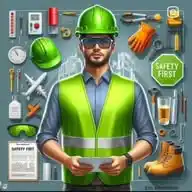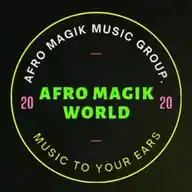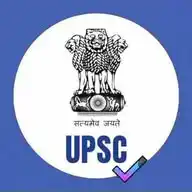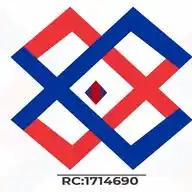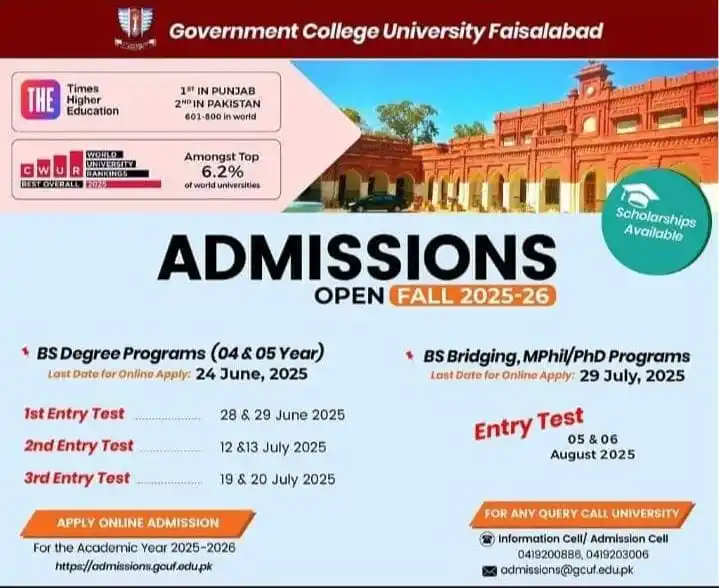Gcuf Ki Duniya
7.7K subscribers
About Gcuf Ki Duniya
In this channel, I will uploaded all data about gcuf all departments and semester.please let's checks and follow this this channel. All to all informations, pastpapers, gusses or notes etc hasil krne ke Liye AP is group ko join karrain joining fee only 100 he bs aek dafa fee deni parre gi phir all semester free main yehan de information or Baki material hasil karrain 👉*Account no* 03026024129 easypaisa/Jazzcash Muhibb Ali Raza 👉Send Screenshots of payment 👉Your name 👉 department 👉Semester 👉campus/affiliate institute name 👉Group link 🔗🔗 https://chat.whatsapp.com/Bj3Dlb3OBC0Byp6HRq2VQ8 👉 Whatsapp channel link 🔗🔗 https://whatsapp.com/channel/0029Va7UBOb9RZAV4gjKxH1b Thank you for joining me and share of others. For notes and books, ebook Follow this website www.taleemkiduniya.com Or www.24hpdf.com Or pastpapers ke Liye is website ko follow karrain www.taleemkiduniya77.blogspot.com Or is ke allawa www.gcufnotesandpastpapers.blogspot.com
Similar Channels
Swipe to see more
Posts
What is science MCq 1. What is the boiling point of water at sea level? A) 90°C B) 100°C C) 110°C D) 120°C Answer: B 2. Which gas is essential for respiration? A) Carbon dioxide B) Oxygen C) Nitrogen D) Hydrogen Answer: B 3. The SI unit of force is: A) Kilogram B) Newton C) Joule D) Watt Answer: B 4. What part of the plant conducts photosynthesis? A) Root B) Stem C) Leaf D) Flower Answer: C 5. Which organ purifies blood in the human body? A) Liver B) Heart C) Kidney D) Lungs Answer: C 6. The hardest natural substance is: A) Gold B) Diamond C) Iron D) Platinum Answer: B 7. What is the chemical symbol for water? A) O2 B) H2 C) CO2 D) H2O Answer: D 8. What gas do plants absorb from the atmosphere? A) Oxygen B) Nitrogen C) Carbon dioxide D) Hydrogen Answer: C 9. The largest planet in the solar system is: A) Earth B) Jupiter C) Saturn D) Mars Answer: B 10. Which vitamin is produced in the skin by sunlight? A) A B) B C) C D) D Answer: D --- More MCQs (11–50) 11. What is the main gas found in the air we breathe? Answer: B) Nitrogen 12. Which part of the atom has no electric charge? Answer: C) Neutron 13. Which planet is known as the Red Planet? Answer: A) Mars 14. What is the center of an atom called? Answer: D) Nucleus 15. What is the pH value of pure water? Answer: C) 7 16. Which instrument is used to measure temperature? Answer: A) Thermometer 17. What do you call animals that eat only plants? Answer: B) Herbivores 18. The speed of light is approximately? Answer: D) 300,000 km/s 19. Which element is needed for hemoglobin in blood? Answer: C) Iron 20. What is the nearest star to Earth? Answer: A) Sun 21. The process of liquid changing to gas is called? Answer: C) Evaporation 22. Sound travels fastest through which medium? Answer: B) Solid 23. Which blood cells help fight infection? Answer: D) White blood cells 24. Which part of the brain controls balance? Answer: C) Cerebellum 25. What is the smallest unit of life? Answer: A) Cell 26. The most abundant element in the universe is? Answer: A) Hydrogen 27. Which organ controls the entire body? Answer: B) Brain 28. Acid rain is caused mainly by? Answer: C) Sulphur dioxide 29. Which vitamin helps with blood clotting? Answer: D) Vitamin K 30. A push or pull on an object is called? Answer: B) Force 31. Which of these is not a state of matter? Answer: D) Energy 32. The Earth rotates on its axis once every? Answer: A) 24 hours 33. What is the chemical formula of salt? Answer: C) NaCl 34. What organ pumps blood through the body? Answer: A) Heart 35. Which metal is liquid at room temperature? Answer: B) Mercury 36. What is used to measure electric current? Answer: D) Ammeter 37. Which natural disaster is measured by the Richter scale? Answer: A) Earthquake 38. Which planet has the most moons? Answer: B) Saturn 39. Which part of the eye controls the amount of light? Answer: C) Iris 40. What is the main function of red blood cells? Answer: D) Carry oxygen 41. Photosynthesis occurs in which cell organelle? Answer: A) Chloroplast 42. What substance do bees collect from flowers? Answer: B) Nectar 43. Which gas causes global warming? Answer: A) Carbon dioxide 44. What does DNA stand for? Answer: B) Deoxyribonucleic Acid 45. Which of these is a renewable energy source? Answer: D) Solar power 46. What is the freezing point of water? Answer: B) 0°C 47. The lungs are part of which system? Answer: A) Respiratory system 48. The study of living organisms is called? Answer: C) Biology 49. Which force pulls objects toward Earth? Answer: A) Gravity 50. Which organ is responsible for digestion of food? Answer: D) Stomach
PSY-301: Introduction to Psychology Important question : 1. Define psychology and explain its nature and applications with special reference to Pakistan. 2. Discuss the historical background and major schools of psychology. 3. Explain the experimental method used in psychological research. 4. Describe the structure and functions of a neuron. 5. Define sensation and perception, and explain the difference between them. 6. Describe the structure and function of the human eye.
PSY-301: Introduction to Psychology_MCQS: 1. Psychology is the scientific study of a) Behavior only b) Mind only c) Behavior and mental processes d) Biology only ✅ c) Behavior and mental processes 2. Who is considered the father of psychology? a) Freud b) Wilhelm Wundt c) Skinner d) James Watson ✅ b) Wilhelm Wundt 3. Which school of psychology focused on the structure of consciousness? a) Functionalism b) Behaviorism c) Structuralism d) Psychoanalysis ✅ c) Structuralism 4. Which perspective studies observable behavior only? a) Psychoanalytic b) Behaviorism c) Humanistic d) Cognitive ✅ b) Behaviorism 5. The method involving detailed investigation of an individual is called: a) Experimental method b) Case history method c) Correlational method d) Observation ✅ b) Case history method 6. Longitudinal studies involve: a) Studying many people at one time b) Studying one individual over a long time c) Studying different groups at one time d) None of these ✅ b) Studying one individual over a long time 7. The basic unit of the nervous system is: a) Brain b) Neuron c) Spinal cord d) Muscle ✅ b) Neuron 8. The part of neuron that receives signals from other neurons is called: a) Axon b) Dendrite c) Cell body d) Myelin sheath ✅ b) Dendrite 9. The central nervous system consists of: a) Brain and spinal cord b) Brain and nerves c) Nerves and muscles d) Spinal cord and muscles ✅ a) Brain and spinal cord 10. The peripheral nervous system includes: a) Brain and spinal cord b) Sensory and motor neurons outside CNS c) Only sensory neurons d) Only motor neurons ✅ b) Sensory and motor neurons outside CNS 11. Which gland is called the “master gland”? a) Thyroid b) Adrenal c) Pituitary d) Pancreas ✅ c) Pituitary 12. Sensation is: a) Interpretation of sensory information b) Process of detecting stimuli c) Perception d) Attention ✅ b) Process of detecting stimuli 13. Perception is: a) Raw sensory data b) Process of organizing and interpreting sensory information c) Reflex action d) Sensory receptor activity ✅ b) Process of organizing and interpreting sensory information 14. Which sense organ is responsible for vision? a) Ear b) Nose c) Eye d) Tongue ✅ c) Eye 15. The colored part of the eye that controls the size of the pupil is called: a) Retina b) Iris c) Cornea d) Lens ✅ b) Iris 16. The structure responsible for focusing light on the retina is the: a) Iris b) Lens c) Cornea d) Pupil ✅ b) Lens 17. The part of the ear that contains the cochlea is called: a) Outer ear b) Middle ear c) Inner ear d) Auditory canal ✅ c) Inner ear 18. Audition refers to the sense of: a) Touch b) Hearing c) Taste d) Smell ✅ b) Hearing 19. Attention is: a) Ignoring stimuli b) Focusing on specific stimuli c) Perceiving all stimuli equally d) Sensory adaptation ✅ b) Focusing on specific stimuli 20. Which type of attention involves voluntarily focusing on a stimulus? a) Selective attention b) Divided attention c) Sustained attention d) Involuntary attention ✅ a) Selective attention 21. A psychological method that manipulates variables to observe effects is called: a) Observation b) Experimental method c) Case study d) Correlation ✅ b) Experimental method 22. Which method measures the relationship between two variables? a) Experimental method b) Correlational method c) Case study d) Observation ✅ b) Correlational method 23. In psychology, a hypothesis is: a) A proven fact b) A testable prediction c) A theory d) A method ✅ b) A testable prediction 24. The brain is part of the: a) Peripheral nervous system b) Central nervous system c) Endocrine system d) Muscular system ✅ b) Central nervous system 25. The spinal cord connects the brain to: a) Muscles only b) Peripheral nervous system c) Skin only d) Endocrine glands ✅ b) Peripheral nervous system 26. The sensory neurons carry information: a) From CNS to muscles b) From sensory organs to CNS c) Within the brain only d) From muscles to brain ✅ b) From sensory organs to CNS 27. Motor neurons transmit impulses: a) From sensory organs to CNS b) From CNS to muscles c) From brain to spinal cord only d) None of these ✅ b) From CNS to muscles 28. Which gland regulates metabolism? a) Thyroid b) Pituitary c) Adrenal d) Pancreas ✅ a) Thyroid 29. The phenomenon of sensory adaptation means: a) Increased sensitivity to stimuli b) Decreased sensitivity to constant stimuli c) Complete loss of sensation d) Random changes in sensation ✅ b) Decreased sensitivity to constant stimuli 30. The ability to perceive depth and distance is called: a) Spatial perception b) Temporal perception c) Auditory perception d) Visual acuity ✅ a) Spatial perception 31. Temporal perception is related to perception of: a) Time b) Space c) Color d) Sound intensity ✅ a) Time 32. Which sense is involved in gustation? a) Hearing b) Taste c) Smell d) Touch ✅ b) Taste 33. The cornea is located in the: a) Ear b) Eye c) Nose d) Mouth ✅ b) Eye 34. The pupil regulates: a) The amount of light entering the eye b) Focusing of the lens c) Color detection d) Eye movement ✅ a) The amount of light entering the eye 35. The auditory canal is part of the: a) Outer ear b) Middle ear c) Inner ear d) Brain ✅ a) Outer ear 36. Which gland produces adrenaline? a) Thyroid b) Adrenal c) Pituitary d) Pancreas ✅ b) Adrenal 37. The basic function of dendrites is to: a) Send signals to other neurons b) Receive signals from other neurons c) Produce neurotransmitters d) Protect the neuron ✅ b) Receive signals from other neurons 38. The cell body of a neuron is also called: a) Axon b) Soma c) Synapse d) Myelin sheath ✅ b) Soma 39. The myelin sheath helps: a) Speed up neural transmission b) Slow down signals c) Produce neurotransmitters d) Connect neurons ✅ a) Speed up neural transmission 40. Which method involves observing behavior without interference? a) Experimental method b) Case study c) Naturalistic observation d) Correlational method ✅ c) Naturalistic observation 41. Which gland controls metabolism and calcium levels? a) Pituitary b) Thyroid c) Parathyroid d) Adrenal ✅ c) Parathyroid 42. Psychological research uses the scientific method because it: a) Relies on intuition b) Produces subjective results c) Produces reliable and valid results d) Avoids experiments ✅ c) Produces reliable and valid results 43. Which school emphasized unconscious mind? a) Behaviorism b) Psychoanalysis c) Functionalism d) Structuralism ✅ b) Psychoanalysis 44. The basic sensory units for taste are called: a) Taste buds b) Olfactory cells c) Rods d) Cones ✅ a) Taste buds 45. The method involving gathering data by asking questions is called: a) Experimental method b) Survey method c) Case study d) Observation ✅ b) Survey method 46. Which sense detects chemicals in the air? a) Vision b) Audition c) Olfaction (smell) d) Touch ✅ c) Olfaction (smell) 47. The ability to maintain focus on a task over time is called: a) Selective attention b) Divided attention c) Sustained attention d) Sensory adaptation ✅ c) Sustained attention 48. Which method involves studying people at one point in time? a) Cross-sectional b) Longitudinal c) Experimental d) Case history ✅ a) Cross-sectional 49. Which is a limitation of correlational studies? a) Cannot establish cause and effect b) Are time-consuming c) Are always expensive d) Do not collect quantitative data ✅ a) Cannot establish cause and effect 50. In psychology, an independent variable is: a) The outcome measured b) The manipulated factor c) Random variable d) Constant variable ✅ b) The manipulated factor 51. A dependent variable is: a) The outcome measured b) The manipulated factor c) A random variable d) A control variable ✅ a) The outcome measured 52. Ethical research requires: a) Deception always b) Informed consent c) Ignoring participant rights d) No confidentiality ✅ b) Informed consent 53. The sympathetic nervous system is part of: a) Central nervous system b) Peripheral nervous system c) Endocrine system d) Muscular system ✅ b) Peripheral nervous system 54. The parasympathetic nervous system: a) Prepares body for fight or flight b) Returns body to rest state c) Controls skeletal muscles d) Controls heartbeat only ✅ b) Returns body to rest state 55. Which of the following is NOT a method of psychological research? a) Experimental method b) Case study c) Astrology d) Correlational study ✅ c) Astrology 56. The limbic system is primarily involved in: a) Vision b) Emotion and memory c) Movement coordination d) Language processing ✅ b) Emotion and memory 57. The process by which sensory receptors convert stimuli into neural signals is called: a) Transduction b) Perception c) Sensation d) Adaptation ✅ a) Transduction 58. The psychological perspective that emphasizes free will and human potential is: a) Behaviorism b) Psychoanalysis c) Humanistic psychology d) Cognitive psychology ✅ c) Humanistic psychology 59. The term “cognitive psychology” refers to the study of: a) Behavior only b) Unconscious motives c) Mental processes like thinking and memory d) Genetic influences on behavior ✅ c) Mental processes like thinking and memory 60. The Stroop test is used to measure: a) Memory capacity b) Selective attention and cognitive interference c) Visual acuity d) Reaction time to auditory stimuli ✅ b) Selective attention and cognitive interference
ICP-321: Ideology and Constitution of Pakistan Most Important Questions : 1. Explain the ideology of Pakistan in the light of the views of Quaid-e-Azam and Allama Iqbal. 2. What is the Two Nation Theory? Discuss the role of Sir Syed Ahmad Khan in its development. 3. Write a detailed note on the Lahore Resolution 1940 and its significance. 4. What is the Objective Resolution 1949? Explain its importance in constitutional history. 5. Describe the historical background of the creation of Pakistan. 6. Discuss the role of women, men, and students in the Pakistan Movement. 7. Give an overview of constitutional development in Pakistan from 1947 to 1973. (Include 1956, 1962, and 1973 constitutions.) 8. Explain the structure of the government of Pakistan under the 1973 Constitution. 9. What is the 18th Amendment? Discuss its main features and its impact on federalism. 10. What are the fundamental rights given to citizens in the 1973 Constitution? Also describe the responsibilities of a citizen.
https://drive.google.com/drive/folders/1HEaB4rBw0_3IxNnywyazXTdOb6sJe56W material Urdu medium
*BS ENGLISH 1ST SEMESTER* *Important Question* *BASICS OF PSYCHOLOGY* *PSY-310* 1. Goals of psychology 2. Research mathod in psychology 3. Nature factors and types od perception 4. Laws of perception 5. Process of types of learning 6. Types of memory 7. Definition and types of motives 8. Thoery and function of emotion 9. Personality 10. Thoery of intelligence 11. Attitudes and their formation and prejudice of social psychology
URD 303 -MCQS 1. اعراب کی کتنی اقسام ہوتی ہیں؟ A) دو B) تین C) چار D) پانچ ✔️ Answer: C) چار 2. حرفِ ندا کی مثال کیا ہے؟ A) یا B) اگر C) اور D) کہ ✔️ Answer: A) یا 3. معرفہ اسم وہ ہوتا ہے جو: A) غیر واضح ہو B) واضح ہو C) اسم صفت ہو D) اسم فعل ہو ✔️ Answer: B) واضح ہو 4. “اچھا” کس قسم کا اسم ہے؟ A) اسم صفت B) اسم معرفہ C) اسم نکرہ D) اسم ظرف ✔️ Answer: A) اسم صفت 5. “لڑکا بھاگ رہا ہے” میں فعل کون سا ہے؟ A) لڑکا B) بھاگ C) رہا D) ہے ✔️ Answer: B) بھاگ 6. “کتاب” کون سا اسم ہے؟ A) معرفہ B) نکرہ C) صفت D) ظرف ✔️ Answer: B) نکرہ 7. علمِ صرف کس سے متعلق ہے؟ A) جملوں کی ترکیب B) الفاظ کی ساخت C) افعال کی اقسام D) جملوں کی اقسام ✔️ Answer: B) الفاظ کی ساخت 8. علمِ نحو کس سے متعلق ہے؟ A) تلفظ B) کتابت C) الفاظ کی ترکیب D) تلفظ کے قواعد ✔️ Answer: C) الفاظ کی ترکیب 9. “اور” کون سا حرف ہے؟ A) حرف ندا B) حرف شرط C) حرف عطف D) حرف نفی ✔️ Answer: C) حرف عطف 10. “اگر” کون سا حرف ہے؟ A) حرف شرط B) حرف ندا C) حرف نفی D) حرف تاکید ✔️ Answer: A) حرف شرط 11. “جو” کون سا حرف ہے؟ A) حرف ربط B) حرف ندا C) حرف شرط D) حرف تاکید ✔️ Answer: A) حرف ربط 12. “نہیں” کون سا حرف ہے؟ A) حرف نفی B) حرف شرط C) حرف تعجب D) حرف ندا ✔️ Answer: A) حرف نفی 13. فعل کی کتنی اقسام ہیں؟ A) 2 B) 3 C) 4 D) 5 ✔️ Answer: B) 3 14. “لڑکی ہنسی” میں فاعل کیا ہے؟ A) ہنسی B) لڑکی C) میں D) کوئی نہیں ✔️ Answer: B) لڑکی 15. “درخت” کون سا اسم ہے؟ A) معرفہ B) نکرہ C) صفت D) فعل ✔️ Answer: B) نکرہ 16. مرکب اضافی کی مثال ہے: A) سرخ گلاب B) پانی کا گلاس C) اونچا درخت D) خوش شکل ✔️ Answer: B) پانی کا گلاس 17. “خوبصورت” کیا ہے؟ A) اسم B) صفت C) فعل D) حرف ✔️ Answer: B) صفت 18. واحد کی جمع “کتاب” کی کیا ہوگی؟ A) کتابیں B) کتابوں C) کتابی D) کتابیّت ✔️ Answer: A) کتابیں 19. “چل رہا ہے” کون سا فعل ہے؟ A) ماضی B) حال C) مستقبل D) نہیں معلوم ✔️ Answer: B) حال 20. اسم ظرف کی مثال ہے: A) خوبصورتی B) نیچے C) کتاب D) تیزی ✔️ Answer: B) نیچے 21. جملہ اسمیہ کی مثال ہے: A) علی آیا B) کتاب پڑھی گئی C) وہ استاد ہے D) چڑیا اُڑ رہی ہے ✔️ Answer: C) وہ استاد ہے 22. جملہ فعلیہ کی مثال ہے: A) آسمان نیلا ہے B) وہ بات کر رہا ہے C) یہ کتاب ہے D) علی شاعر ہے ✔️ Answer: B) وہ بات کر رہا ہے 23. “میں نے کتاب پڑھی” میں مفعول کیا ہے؟ A) کتاب B) میں C) نے D) پڑھی ✔️ Answer: A) کتاب 24. “غصے سے” میں “سے” کیا ظاہر کر رہا ہے؟ A) مفعول B) متعلق C) فعل D) صفت ✔️ Answer: B) متعلق 25. “اور” کون سا حرف ہے؟ A) شرط B) ندا C) ربط D) عطف ✔️ Answer: D) عطف 26. “کلمہ” کی کتنی اقسام ہیں؟ A) 2 B) 3 C) 4 D) 5 ✔️ Answer: D) 5 27. علم صرف کا مقصد کیا ہے؟ A) جملوں کی تشکیل B) الفاظ کی تبدیلی اور ساخت C) جملوں کا ترجمہ D) تلفظ کی درستگی ✔️ Answer: B) الفاظ کی تبدیلی اور ساخت 28. “وہ لڑکا” ایک مثال ہے: A) معرفہ B) نکرہ C) صفت D) ضمیر ✔️ Answer: A) معرفہ 29. “یہ” کون سی قسم کا کلمہ ہے؟ A) اسم B) ضمیر C) فعل D) صفت ✔️ Answer: B) ضمیر 30. “خوبی” کا واحد کیا ہوگا؟ A) خوب B) خوبی C) خوبیاں D) خوبیت ✔️ Answer: B) خوبی 31. “یہ کتاب علی کی ہے” میں مضاف الیہ کون ہے؟ A) کتاب B) علی C) ہے D) کی ✔️ Answer: B) علی 32. “زید گیا” میں فعل کون سا ہے؟ A) زید B) گیا C) میں D) کوئی نہیں ✔️ Answer: B) گیا 33. “وہ سکول گیا” میں “سکول” کون سا اسم ہے؟ A) ظرف B) مفعول C) معرفہ D) نکرہ ✔️ Answer: B) مفعول 34. “پانی بہہ رہا ہے” میں “بہہ” کون سا کلمہ ہے؟ A) فعل B) مفعول C) صفت D) اسم ✔️ Answer: A) فعل 35. جملہ اسمیہ کا آغاز ہوتا ہے؟ A) فعل سے B) اسم سے C) ضمیر سے D) حرف سے ✔️ Answer: B) اسم سے 36. “سناٹا چھا گیا” میں کون سا جملہ ہے؟ A) جملہ اسمیہ B) جملہ فعلیہ C) مرکب جملہ D) شرطیہ ✔️ Answer: B) جملہ فعلیہ 37. “کتب خانہ” کون سا مرکب ہے؟ A) مرکب توصیفی B) مرکب اضافی C) مرکب عطقی D) مرکب عددی ✔️ Answer: B) مرکب اضافی 38. “ایک خوبصورت گلاب” میں “خوبصورت” کیا ہے؟ A) صفت B) مفعول C) ضمیر D) اسم ✔️ Answer: A) صفت 39. “اچانک” کیا ہے؟ A) فعل B) اسم C) متعلق D) صفت ✔️ Answer: C) متعلق 40. “کیا” کون سا کلمہ ہے؟ A) حرف سوال B) اسم C) صفت D) فعل ✔️ Answer: A) حرف سوال 41. “میں خوش ہوں” میں فعل کون سا ہے؟ A) میں B) خوش C) ہوں D) کوئی نہیں ✔️ Answer: C) ہوں 42. “بہت” کس چیز کی شدت ظاہر کرتا ہے؟ A) صفت B) مفعول C) متعلق D) ضمیر ✔️ Answer: C) متعلق 43. “کتاب لکھی گئی” میں “لکھی گئی” کس صیغے میں ہے؟ A) حال B) مستقبل C) ماضی D) شرطیہ ✔️ Answer: C) ماضی 44. “یہ کام مکمل ہو چکا” کون سا جملہ ہے؟ A) اسمیہ B) فعلیہ C) مرکب D) شرطیہ ✔️ Answer: B) فعلیہ 45. جملے میں “نے” کا کیا کردار ہوتا ہے؟ A) مفعول B) فاعل C) فعل D) علامت فاعل ✔️ Answer: D) علامت فاعل 46. “بچپن کی یادیں” میں “یادیں” کون سا اسم ہے؟ A) جمع B) معرفہ C) نکرہ D) صفت ✔️ Answer: A) جمع 47. “سفر آسان تھا” میں “آسان” کیا ہے؟ A) مفعول B) صفت C) ظرف D) فاعل ✔️ Answer: B) صفت 48. “علی اور بلال” میں “اور” کیا ہے؟ A) حرف ربط B) حرف ندا C) حرف عطف D) حرف تاکید ✔️ Answer: C) حرف عطف 49. “کھڑا ہونا” کون سا فعل ہے؟ A) مجرد B) مرکب C) ماضی D) حال ✔️ Answer: B) مرکب 50. “کون آیا؟” میں “کون” کیا ہے؟ A) اسم B) ضمیر C) صفت D) حرف استفہام ✔️ Answer: D) حرف استفہام 51. “خوشبو” کون سا مرکب لفظ ہے؟ A) مرکب اضافی B) مرکب توصیفی C) مرکب عطقی D) مرکب عددی ✔️ Answer: B) مرکب توصیفی 52. “پانچ آدمی” میں “پانچ” کیا ہے؟ A) اسم B) صفت C) عدد D) متعلق ✔️ Answer: C) عدد 53. “وہ روتی رہی” میں فعل کی نوعیت کیا ہے؟ A) سادہ B) مرکب C) مرکب اضافی D) فعل امر ✔️ Answer: B) مرکب 54. “یہی وہ شخص ہے” میں “یہی” کیا ہے؟ A) اسم B) ضمیر C) صفت D) حرف ✔️ Answer: C) صفت 55. “جلدی” کون سا کلمہ ہے؟ A) ظرف B) فعل C) صفت D) اسم ✔️ Answer: A) ظرف 56. “مرد” کی مونث کیا ہوگی؟ A) عورت B) بیوی C) مادہ D) زوجہ ✔️ Answer: A) عورت 57. “کتابیں” کا واحد کیا ہے؟ A) کتاب B) کتابی C) کتابچہ D) کتب ✔️ Answer: A) کتاب 58. “لڑکے” کی جمع کیا ہے؟ A) لڑکیوں B) لڑکوں C) لڑکیاں D) لڑکوں کی ✔️ Answer: B) لڑکوں 59. “میرے پاس” میں “میرے” کیا ہے؟ A) ضمیر B) اسم C) صفت D) فعل ✔️ Answer: A) ضمیر 60. “کسی نے کچھ کہا” میں “کسی” کیا ہے؟ A) ضمیر B) صفت C) حرف D) متعلق ✔️ Answer: A) ضمیر 61. “صبح” کون سا اسم ہے؟ A) معرفہ B) نکرہ C) ظرف D) صفت ✔️ Answer: C) ظرف 62. “دل سے” میں “سے” کیا ظاہر کر رہا ہے؟ A) ظرف B) مفعول C) متعلق D) ضمیر ✔️ Answer: C) متعلق 63. “تم نے کیوں کہا؟” میں “کیوں” کیا ہے؟ A) حرف B) ضمیر C) متعلق D) صفت ✔️ Answer: C) متعلق 64. “جہاں” کیا ظاہر کرتا ہے؟ A) زمان B) مکان C) کیفیت D) ضمیر ✔️ Answer: B) مکان 65. “جب” کیا ظاہر کرتا ہے؟ A) مکان B) ضمیر C) زمان D) صفت ✔️ Answer: C) زمان 66. “تمہاری بات” میں “تمہاری” کیا ہے؟ A) ضمیر B) صفت C) حرف D) متعلق ✔️ Answer: A) ضمیر 67. “دل خوش ہوا” میں “دل” کیا ہے؟ A) اسم B) فعل C) ضمیر D) صفت ✔️ Answer: A) اسم 68. “زندگی” کا واحد ہے؟ A) زندگی B) زندہ C) زندگیاں D) زندگان ✔️ Answer: A) زندگی 69. “بولنا” کیا ہے؟ A) فعل B) اسم C) صفت D) متعلق ✔️ Answer: A) فعل 70. “بولنے والا” کیا ہے؟ A) اسم B) صفت C) فعل D) مرکب ✔️ Answer: B) صفت 71. “محنتی طالبعلم” میں “محنتی” کیا ہے؟ A) اسم B) صفت C) فعل D) ضمیر ✔️ Answer: B) صفت 72. “درخت کے نیچے” میں “نیچے” کیا ہے؟ A) ظرف مکان B) ظرف زمان C) مفعول D) ضمیر ✔️ Answer: A) ظرف مکان 73. “صبح سویرے” میں “صبح” کیا ہے؟ A) ظرف B) اسم C) متعلق D) صفت ✔️ Answer: A) ظرف 74. “غصہ آیا” میں “غصہ” کیا ہے؟ A) اسم B) فعل C) صفت D) متعلق ✔️ Answer: A) اسم 75. “میں گیا” میں “میں” کیا ہے؟ A) فاعل B) مفعول C) متعلق D) حرف ✔️ Answer: A) فاعل 76. “تم سے بات کی” میں “سے” کیا ہے؟ A) حرف B) متعلق C) فعل D) ضمیر ✔️ Answer: A) حرف 77. “جلدی جلدی” کیا ظاہر کرتا ہے؟ A) صفت B) ظرف C) تاکید D) اسم ✔️ Answer: C) تاکید 78. “بات کرنا” میں کیا ہے؟ A) مرکب فعل B) سادہ فعل C) اسم D) صفت ✔️ Answer: A) مرکب فعل 79. “ہم نے کام مکمل کیا” میں “ہم” کیا ہے؟ A) فاعل B) مفعول C) صفت D) متعلق ✔️ Answer: A) فاعل 80. “کہ” کون سا حرف ہے؟ A) ربط B) ندا C) نفی D) تاکید ✔️ Answer: A) ربط 81. “اگر” کون سا حرف شرط ہے؟ A) جی ہاں B) نہیں C) اگر D) کیونکہ ✔️ Answer: C) اگر 82. “جو” کس چیز کو ظاہر کرتا ہے؟ A) تعلق B) شک C) ترتیب D) وقت ✔️ Answer: A) تعلق 83. “بہت زیادہ” کیا ظاہر کرتا ہے؟ A) تاکید B) صفت C) متعلق D) عدد ✔️ Answer: A) تاکید 84. “وہ کھانا کھا رہا ہے” میں “کھا رہا ہے” کیا ہے؟ A) فعل حال B) فعل ماضی C) فعل امر D) فعل مستقبل ✔️ Answer: A) فعل حال 85. “چلو چلیں” کون سا جملہ ہے؟ A) جملہ شرطیہ B) جملہ امر C) جملہ سوالیہ D) جملہ فعلیہ ✔️ Answer: B) جملہ امر 86. “علی نے خط لکھا” میں فعل کون سا ہے؟ A) علی B) نے C) خط D) لکھا ✔️ Answer: D) لکھا 87. “تم نے کہا” میں “کہا” کیا ہے؟ A) فعل B) صفت C) ضمیر D) متعلق ✔️ Answer: A) فعل 88. “صاف صفائی” میں کیا ہے؟ A) مرکب B) تاکید C) صفت D) اسم ✔️ Answer: B) تاکید 89. “دوست” کون سا اسم ہے؟ A) معرفہ B) نکرہ C) ضمیر D) ظرف ✔️ Answer: A) معرفہ 90. “انہوں نے دیکھا” میں “انہوں” کیا ہے؟ A) ضمیر B) فعل C) متعلق D) صفت ✔️ Answer: A) ضمیر 91. “پانی بہا” میں “بہا” کون سا فعل ہے؟ A) ماضی B) حال C) مستقبل D) شرطیہ ✔️ Answer: A) ماضی 92. “آسمان نیلا ہے” میں “نیلا” کیا ہے؟ A) صفت B) اسم C) فعل D) متعلق ✔️ Answer: A) صفت 93. “زیادہ تر لوگ” میں “زیادہ تر” کیا ہے؟ A) صفت B) متعلق C) ضمیر D) اسم ✔️ Answer: A) صفت 94. “بہت سے طلبا” میں “بہت سے” کیا ہے؟ A) صفت B) عدد C) تاکید D) متعلق ✔️ Answer: A) صفت 95. “پہلے” کیا ظاہر کرتا ہے؟ A) مکان B) صفت C) زمان D) اسم ✔️ Answer: C) زمان 96. “سب سے اچھا” کیا ظاہر کرتا ہے؟ A) تفضیل B) عدد C) صفت D) تاکید ✔️ Answer: A) تفضیل 97. “ہمیشہ” کیا ظاہر کرتا ہے؟ A) ظرف زمان B) ظرف مکان C) صفت D) فعل ✔️ Answer: A) ظرف زمان 98. “پھر” کون سا متعلق ہے؟ A) مکان B) زمان C) صفت D) اسم ✔️ Answer: B) زمان 99. “علی اور بلال” میں “اور” کیا ہے؟ A) حرف عطف B) حرف شرط C) حرف ندا D) حرف ربط ✔️ Answer: A) حرف عطف 100. “کوئی بات نہیں” میں “کوئی” کیا ہے؟ A) ضمیر B) صفت C) عدد D) متعلق ✔️ Answer: A) ضمیر
URD 303 Urdu grammar ist semester 1. اعراب کیا ہے؟ اس کی اقسام بیان کریں. 2. علم صرف کیا ہے؟ اس کے اجزاء کی وضاحت کریں۔ 3. اسم کی اقسام اور معرفہ و نکرہ کی تفصیل بیان کریں۔ 4. فعل کی اقسام اور اس کے اجزاء بیان کریں۔ 5. علمِ نحو کی تعریف اور اہمیت لکھیں۔ 6. نحو ترکیب اور نحو تفصیل میں فرق کریں۔ 7. جملہ اسمیہ اور جملہ فعلیہ میں فرق بیان کریں۔ 8. فاعل، مفعول، فعل، صفت، متعلق کی تعریف اور مثالیں دیں۔ 9. وقف و اوقاف کی اقسام بیان کریں۔ 10. رموزِ اوقاف کی اقسام اور مثالوں سے وضاحت کریں۔ 11. واحد و جمع کے قواعد اور مثالیں بیان کریں۔ 12. مرکب الفاظ اور ان کی اقسام بیان کریں۔
*BS ENGLISH 1ST SEMESTER* *BASICS OF PSYCHOLOGY* 1. Goals of psychology 2. Research mathod in psychology 3. Nature factors and types od perception 4. Laws of perception 5. Process of types of learning 6. Types of memor 7. Definition and types of motives 8. Thoery and function of emotion 9. Personality 10. Thoery of intelligence 11. Attitudes and their formation and prejudice of social psychology




